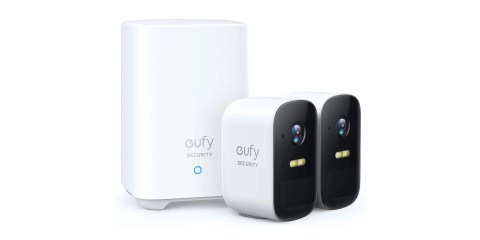
Apple @ Work is brought to you by Jamf, the standard for Apple in the enterprise. Learn more at Jamf.com/9to5mac.
Cloud computing is a term thrown around by everyone in today’s enterprise IT environment. For the next few weeks, I want to discuss what cloud computing is, why it’s beneficial for organizations of all sizes, how to build an Apple-focused organization around the cloud, and my experiences.
About Apple @ Work: Bradley Chambers has been managing an enterprise IT network since 2009. Through his experience deploying and managing firewalls, switches, a mobile device management system, enterprise-grade Wi-Fi, 100s of Macs, and 100s of iPads, Bradley will highlight ways in which Apple IT managers deploy Apple devices, build networks to support them, train users, stories from the trenches of IT management, and ways Apple could improve its products for IT departments.
What is cloud computing?
Cloud computing is just a fancy word for your data in someone else’s environment. For the privacy concerned folks, that can sometimes throw up a red flag. I decided over a decade ago that cloud computing in the enterprise would be the future, and I’ve been proven right over and over.
In practical terms, a good example is using G Suite or Office 365 for email instead of hosting your email server onsite. Another is using a website hosting service instead of building your server in-house.
Why is cloud computing beneficial?
Over the years, we’ve seen many services move from a “buy and install in your own environment” to Software as a Service. Instead of having to buy expensive hardware, you can pay for it on a monthly/yearly basis. A fancier term for this is “capital expenditures” vs. “operating expenditures.” For a lot of organizations, it’s easier to budget for monthly recurring bills vs. large capital purchases.
From a disaster recovery perspective, cloud computing provides immense benefits. Is your organization prepared for a long-term power outage or internet outage at your primary campus? How would this impact remote sites? Would you be able to process payroll, serve your customers, and continue operations? How is your backup strategy? Is it being tested?
By leveraging the cloud, companies can focus on their core business vs. worrying about disaster recovery. If your email is hosted on G Suite, and you lose internet access, you can connect from LTE or go to another location.
What are some examples of cloud services?
Like I mentioned earlier, email and web hosting are common examples. Other examples are cloud networking (Extreme Networks), cloud mobile device management (Jamf), cloud identity services (JumpCloud), cloud digital signage (Kitcast), cloud CRM (Salesforce), cloud accounting (Intacct), and cloud student databases (FACTS SIS).
According to a recent Extreme Networks survey of 1,200 IT leaders, 14-17% of enterprises, depending on the industry, already manage their network from the cloud, and 40% have plans to transition to the cloud within five years. The top reasons cited for moving to cloud are ease of management and better access to resources.
I could list countless examples for every industry. I can’t name a single thing that enterprise customers would need that can’t be done in the cloud. For distributed organizations, cloud computing means the simplicity of onboarding new sites/employees without worrying about complex VPN connections for remote/mobile employees.
Over the next few weeks, I am going to lay out a plan for taking your Apple-focused organization from either an onsite solution-focused company or taking a partial-cloud company to a cloud-first and cloud-only organization.
Thanks to Jamf for sponsoring Apple @ Work. As the standard for Apple in the enterprise, Jamf is committed to enabling IT to bring the legendary Apple experience to businesses, education institutions and government organizations via its product portfolio built-exclusively for Apple. Jamf currently has over 35,000 customers in over 100 countries using Jamf Pro, Jamf Now, Jamf Connect, Jamf Protect, and Jamf School for managing iPhones, iPads, and Macs.
Learn more at Jamf.com/9to5mac.
FTC: We use income earning auto affiliate links. More.







Comments